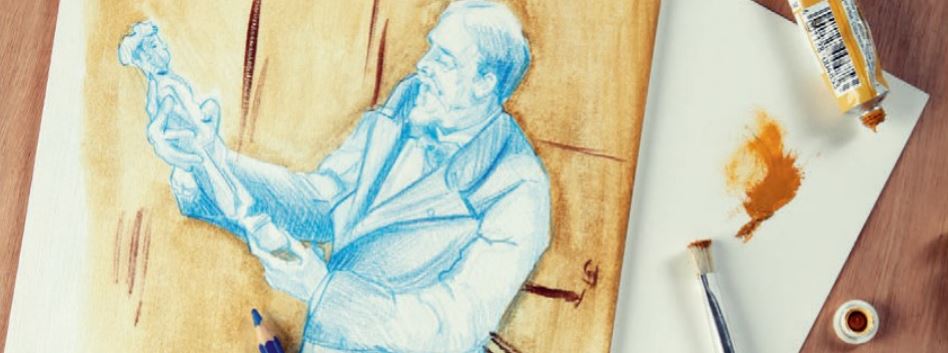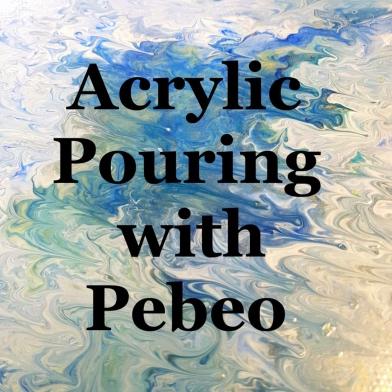FAQ: How to Preserve your Artwork
Why use acid-free materials? Is exposure to sunlight always to be avoided? Should watercolour paintings be kept in plastic sleeves? Is it better to store paintings horizontally or vertically? Read on to find answers to commonly asked questions about storing and framing finished art pieces and to gain a better understanding of archival quality materials.

Archival Materials – Creating the Artwork
Protecting your artwork starts with a good foundation. Good storage and framing will not counteract inadequate materials, and if you want your artwork to last decades or even centuries, there are a number of things to look out for when selecting your art materials.

- Use acid-free (or PH neutral) materials including your paper and anything that will come into contact with your artwork (portfolio materials, backing boards, masking tape, etc). Acid will cause yellowing and deterioration over time, which is accelerated when heat and sunlight is involved. You may come across the following terms when your are looking for the ideal paper:
– Conservation grade: acid-free, buffered paper made from wood-based pulp
– Archival or museum grade: acid-free cotton rag paper made from cotton pulp
Both are perfectly acceptable and will make for a great substrate for your artwork. Nowadays acid-free is an industry standard for good quality art paper. - Use lightfast, pigment-based materials and avoid dyes. Dyes are known to have brilliant colours straight out of the bottle, however, they fade pretty quickly. Artist quality paints will always display their lightfastness ratings or otherwise known as permanence. These are either expressed in ASTM (American Society for Testing Materials) ratings (I: excellent, II: very good, III: not sufficiently lightfast) or on a scale of 1-8 according to the Blue Wool Scale (1: excellent – 8: very poor). Using ASTM I or BWS 1-2 permanence will ensure your artwork will look the same for 100+ years when stored or displayed under normal conditions.
- Limit exposure to sunlight and UV light even whilst creating your artwork as most artworks (with the exception of oils, more on this later) are light sensitive and will fade. UV can cause colour fading, cracking of the paint and other unwanted chemical reactions. Avoid direct sunlight for extended periods of time, especially with very sensitive watercolour paintings. When you leave the room, keep the artwork in a drawer or cover it with acid-free tissue and close curtains and blinds. Make sure your studio doesn’t have any incandescent bulbs or fluorescent lights that emit UV radiation. Check for UV filters on the packaging of bulbs. LED and fibre optic lights are safest from UV rays and should be used exclusively in spaces where you create your artwork.
- Avoid extreme fluctuations of temperature and humidity in your studio space. Heat from radiators or fireplaces can damage the artwork much like sunlight, and humidity will make your sheets of paper damp and susceptible to buckling, molding, rotting and rusting (more on this in the next section). If you don’t have the best conditions or have to use a damp spare room make sure you install dehumidifiers. There are many good ones on the market, some electric, some chemical and they are totally worth the investment.
- Keep everything clean including equipment and hands: it goes without saying that dust, smoke, food residue and other contaminants commonly occurring in human occupied spaces should not get into your paint, water, mediums and onto paper and canvas. Oil from human skin can also cause major issues, especially for watercolourists: fingerprints on paper will make it resist water and paint, leading to patchy work. Wash hands frequently, clean brushes and other equipment with brush soap and keep your space dust-free.

Archival quality paper, UV-safe Daylight Studio Lamp and Brush Soap – Give your artwork the best foundation
Storing your Art
After selecting the right materials and creating your artwork in a suitable environment, there are usually two ways to go: storage or framing. The last thing you want is for something to happen at that stage, so to save yourself the disappointment of unwrapping a mouldy mess months later, here are some general guidelines to follow:
Storage Tips for Oil, Acrylic Paintings and other Media on Canvas or Board
- Make sure the artwork is completely dry before you wrap and store it. This is especially true for oil paintings as depending on the thickness and the composition of paint, they dry between 3 months and 2 years!
- Varnish your dried artwork with an archival quality varnish that is transparent (to keep its appearance), reversible (a museum conservator can remove it), elastic (allowing for the canvas to stretch) and resistant to moisture (to avoid mould, rust and other issues).
- Avoid any touching of the painted surface to minimise the risk of contamination. Use cotton gloves when handling your paintings.
- Use acid-free packaging such as tissue paper or glassine. You can bubble wrap your artwork for storage and transportation but leave it slightly open so it can breathe.
- Store your paintings vertically, rather than horizontally and do not stack them. Pressure can trap the air and cause condensation build up whilst heavy loads can crack or otherwise move the layers and alter the appearance of your work.
- If storing horizontally, use a rack, shelving or a planchest and use padding between artworks if you need to stack them.
- Do not lean artwork against damp walls and always leave a gap to allow for air circulation.
- If storing artworks in cardboard boxes or airtight containers, you still need to wrap them individually and following the above storage rules. Cardboard is not acid-free and both are prone to trap moisture.
- Label each box and keep an inventory that includes the location for each item. This will save you the headache when a painting sells and you need to locate it quickly.
- Keep your storage space dry and limit sunlight but keep in mind that oil paintings gradually darken or yellow when they are not exposed to light due to their linseed oil content. This can easily be reversed by placing them under diffused light for a few days.

Archiving Materials (from left to right): varnishes, acid-free tissue and glassine
Storing Watercolour Paintings, Drawings and Prints (Artwork on Paper)

- Store watercolour paintings, drawings and prints horizontally and flat rather then rolled up in a tube. Overlapping paper can grate the surface of your artwork and if humidity is involved, it can turn into a disaster!
- Use acid-free packaging (tissue, glassine, etc). You can wrap the artwork completely or interleave the material between artworks kept in the same folder. Glassine is especially good for separating pastels and other porous media as it won’t smudge the surface.
- Avoid storing artwork in plastic or cellophane sleeves as they might trap condensation and ruin your artwork. Clear cellophane bags are generally used for displaying artwork and prints at artshows and sent to customers through marketplace sales but these are not normally acid-free so should be short term only solutions. If you are planning to store them long term, make sure you buy ones that are acid-free or buy glassine envelopes which are also environmentally friendly and biodegradable.
- Avoid touching the surface of your artwork and use cotton gloves when handling it. This will reduce the risk of contamination.
- Your storage space should be dark and dry with a nonfluctuating temperature. Once the artwork is carefully wrapped, place it in a folder, cardboard box or in a plastic container and find a suitable place. The back of a wardrobe can be a good option, a planchest is the best one. Keep the box away from heat and damp and install dehumidifiers if necessary.
- Label all boxes and keep an inventory.

Storage Options for Paper (from left to right): Portfolios, Plastic Storage Boxes and Planchest
Framing your Art

The same rules apply when it comes to framing your work: avoid acid, sunlight and UV radiation, humidity and handling with bare hands. Here are some additional tips:
- Frame under UV filtering glass or acrylic glass rather than ordinary glass which does not filter UV at all. Filters don’t provide 100% protection but framing with filtering glass can extend your artwork’s life to up to 100 years.
- Everything involved in the framing process should be acid-free. This includes mountboards, backing boards and framing tape. Acid in glue can be especially dangerous and while the damage is gradual, in 30 years your entire artwork will look… well, brown. Backing boards are often made from wood which is acidic due to is lignin content. If you are using foamboard, make sure it is archival too as both varieties exist.
- Use mountboards to keep a gap between the artwork and the glass, otherwise it might stick to it. This is very dangerous because it can create a condensation build-up and it might even rip the surface of the artwork when they are finally separated.
- Leave a gap between the artwork and the wall, too. You can easily create home-made bumpers even from pieces of wood or cardboard as they don’t come into contact with the artwork. Check behind paintings regularly to catch any problems before they reach the artwork and reposition them if necessary.
- Avoid displaying in humid environments such as kitchens where the evaporating steam, oil and other food particles can settle on the frame and glass and seep into the artwork, causing it to degrade even when framed correctly.
- Hang artwork in optimal light conditions: diffused natural light works best even when framed under UV glass.
- Dust frames and glass regularly with microfiber clothes and avoid cleaners altogether. Dusting them twice a year is usually enough.

Archival framing Materials (from left to right): Pre-cut Mounts, Foamboard and Framing Tape
These are the general rules of storing and framing artworks and we hope the information will help you keep your drawings and paintings in good shape for as long as possible. Remember to buy acid-free paper and paints made with lightfast pigments and create the best conditions in your studio when it comes to lighting, temperature and humidity. All art materials mentioned in this article can be purchased through our website, by calling 01273 260260 ext 1. or in our shop at 208-212 Portland Road, Hove.







